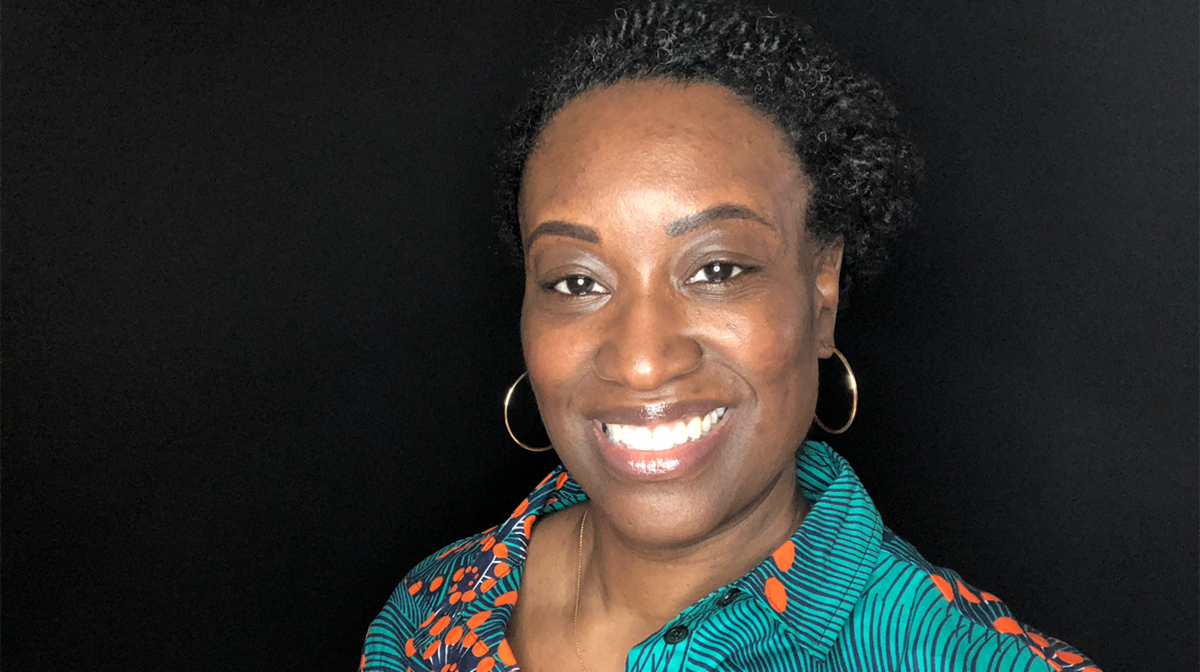Marketing research needs to be driven by social justice, says Professor Ekpo

Professor Akon Ekpo researches marketplace marginalization and technology consumption.
Consumers often consider technology to be convenient or even indulgent. However, this is not the case for all communities, according to Assistant Professor Akon Ekpo, PhD. For many marginalized populations, these innovations are used for avoiding discrimination and for survival.
Because of this, Ekpo calls for marketing scholars to take a deeper dive into understanding different perspectives in the uses of technology and to address consumer well-being.
From IT to marketing professor
Ekpo began her career in information technology, working in consumer software development and as a project manager for consumer technology. During her work in IT, she started seeing differences in how people use their technology.
“I noticed the different ways people became reliant on technology, and it came down to experiences of marginalization in the marketplace,” says Ekpo.
“When we think about technology products and how it’s marketed, it’s always about convenience, benefits (features), and advantages of that product,” she says. “For marginalized communities, it’s seen as tools, resources, and access. Technology becomes a tool that helps them navigate issues, such as systemic racism or discrimination, they run into in the marketplace.”
This is what she refers to as “marketplace marginalization.” This marginalization is often unintentional. However, the marketing tactics and targeting strategies utilized by marketers, while thought to be optimized, may work to systematically exclude and deny access to particular populations.
Many brands’ marketing strategies tend to target the “mainstream market” of white heterosexual cisgender men, as this group is often paid higher salaries and are assumed to have higher discretionary income, Ekpo says. Thus, this group’s needs and wants are privileged and become the basis for product research and development.
Technology for convenience vs. survival
“However, when you move away from this as your mainstream market, you begin to see differences in motivations, attitudes, and behavior,” Ekpo says. One example is how mainstream and marginalized consumers differ in their use of mobile phones and video recording capability.
“Marginalized populations have come to utilize mobile phones as a resource to provide evidence through video recording and posting on social media, especially in the situations of marketplace harassment, false accusations, or worse,” says Ekpo. “They have become the ‘voice’ of those often not heard and ignored.”
“Mobile phones were once a symbol of wealth and luxury, but now they symbolize the difference between life and death, and an assurance that one’s voice is heard. A mobile phone has become a necessity as means of defense,” she continues.
Ecommerce is another example of differences in use of technology between convenience and survival.
“When we thought about ecommerce, we thought about how it was convenient to have something delivered to your door,” says Ekpo. “Juxtapose that to the marginalized person who worries about and anticipates that when they go into a retail space, they will be followed by security personnel, detained or falsely accused of criminal activity, or just ignored by sales personnel. The idea of e-commerce not only changed the way people shop, it also allowed marginalized consumers to continue to participate in the market without the worry of going into a physical retail space.”
As an example, she cites a successful 2013 racial profiling lawsuit brought Trayon Christian, a black college student was arrested and accused of credit card fraud after buying a $349 belt at Barneys New York.
“Let’s imagine how something like ecommerce could have changed Trayon’s experience,” Ekpo says. “Being able to shop online would have allowed Trayon to avoid the racist stereotype that assumes he did not belong in the store and thus was not suitable to make such a purchase legally, an issue that black people continue to deal with on a daily basis.
“However, Trayon should not have to do this,” she continues. “This should signal a breakdown in the marketplace. In fact, technology use in this manner is a circumvention of the real issue of systemic racism in the marketplace.”
A call for justice
Ekpo urges marketers to understand these differences in technology consumption and investigate their meanings: “How do we use this information as marketers to do better? It’s not just about the bottom line. It’s about how do you join in the conversations about racism and marginalization and about understanding why people consume certain technology.”
To do this, Ekpo believes marketing researchers must also change the way they research consumers so findings reflect the perspectives of marginalized groups and give voice to the voiceless. This focus on consumer well-being as part of research is called “Transformative Consumer Research.”
“If people aren’t doing what we expect them to do, that changes how we have to research them. If I’m expecting someone to buy an iPhone because it has cool features, but if they’re buying an iPhone for another reason, as a researcher and scholar, I miss out on the true reasons why they bought it,” says Ekpo. “I am missing a big chunk of behavior, what drives that behavior, and what the outcomes are.
She concludes by saying, “We have to start changing the ways we research those who are marginalized. And more importantly, we must work to give voice to the voiceless, focus on consumer well-being, and work towards social justice.”
